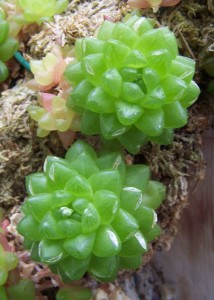Whether it’s a bird, an insect or a plant, we’re quick to name the wild elements of our planet after the manmade things they remind us of, or even ourselves. Could you automatically pick out an Eastern Kingbird by its name? Hardly descriptive, is it? That is, until you watch it in action for a few moments. It thinks it’s the king of all it surveys, despite its size relative to other birds, and vociferously defends its own territory during the breeding season. It even holds the Latin name Tyrannus tyrannus. But, the fact is that it does have a “crown” of red, yellow or orange feathers that is typically hidden by darker feathers on top of its head. Yes, the kingbird has a crown.
So it should come as no surprise that when Haworthia cymbiformis was discovered in 1809 it earned the name it did. With its intricate but symmetrical patterns, it reminded its discoverer of a touch of old Europe – of Cathedral Windows. And the discoverer had to find it in the right season. Typically buried in sand, the plant is known for transparent tips at the ends of its leaves, the only part exposed to the sunlight, save for the protruding flower.
But we’re not in the desert. We’re in Coes Greenhouse at the South Shore Natural Science Center. Come on by and see this desert succulent plant, and better understand why it got its name.
